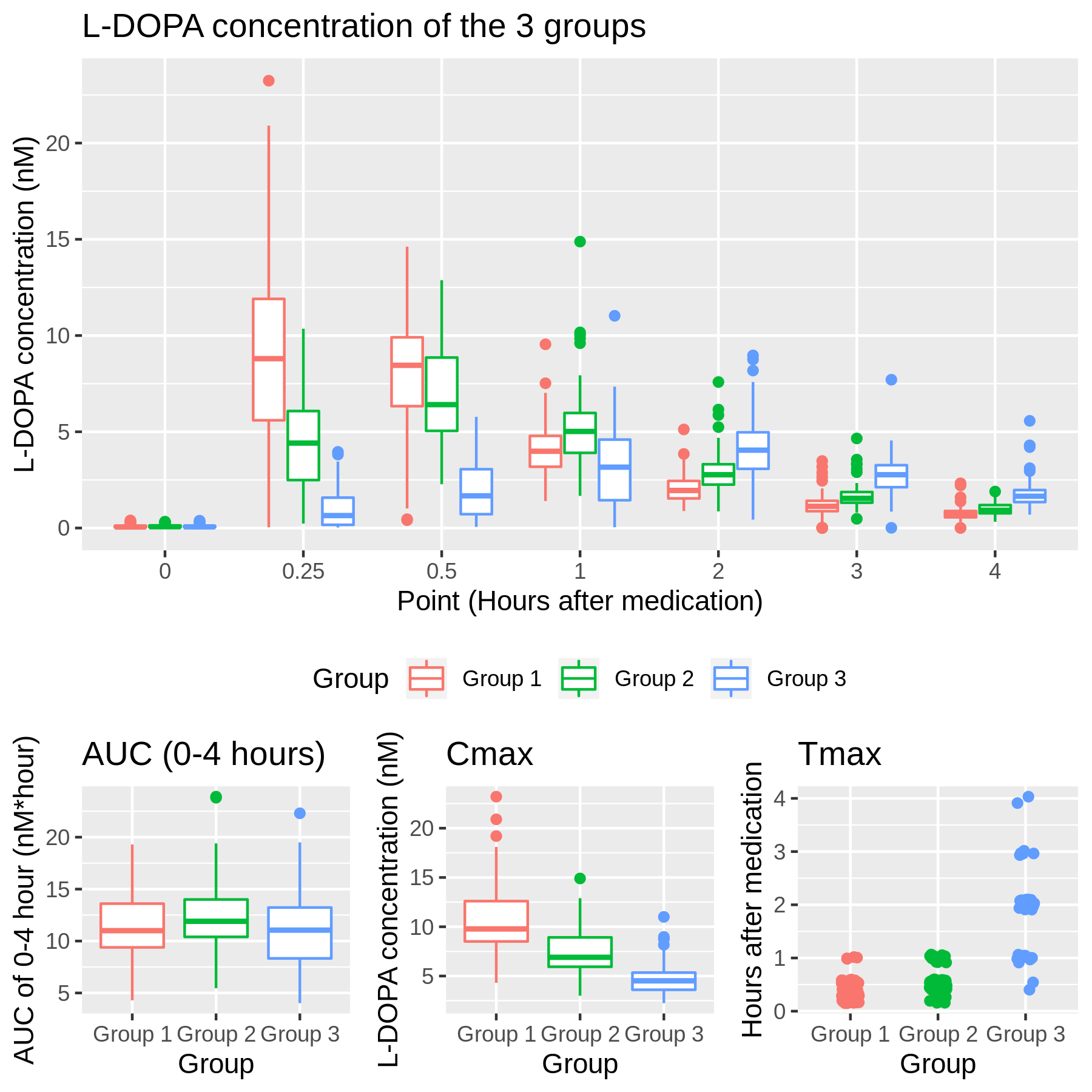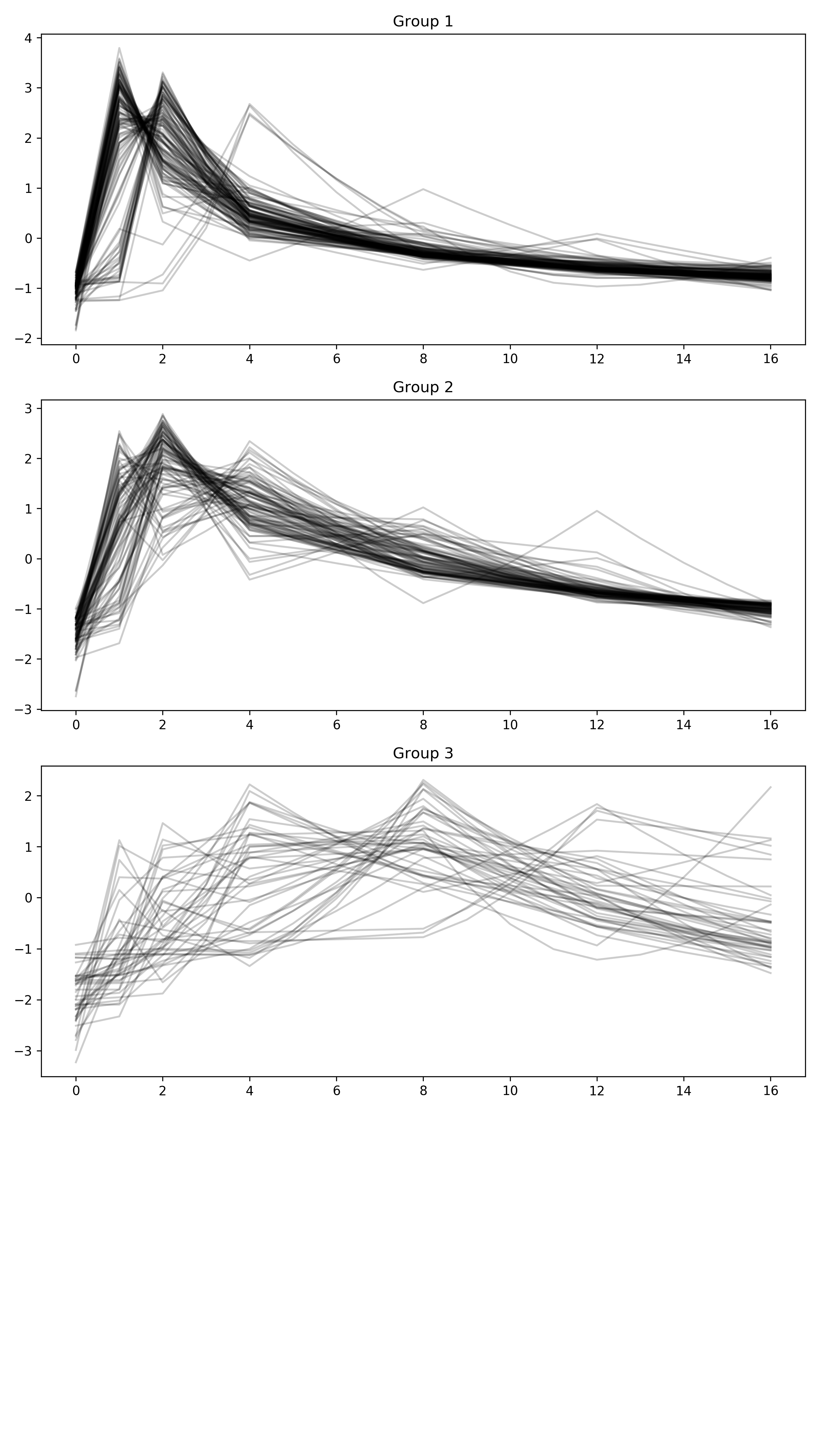Objective: Our aim was to explore correlations between the pharmacokinetics of levodopa (LD) and clinical manifestation in patients with Parkinson’s disease (PD). Our goal was to generate a predictive model based on our observations.
Background: We reported previously that several variables, including age, sex, body weight, and co-administration of a decarboxylase inhibitor, were all significantly related to the area under the curve (AUC). However, the pharmacokinetic patterns can differ from one another even in the cases where AUC is unchanged.
Method: We studied 270 PD patients who underwent pharmacokinetic assessment after administration of LD/carbidopa(100/10mg) using non-compartmental analysis. Patients were grouped by the similarities in blood LD concentration and time series data were collected. The k-Shape algorithm was used for clustering(Fig.1). Each group was analyzed evaluated with respect to demographic and clinical characteristics and blood LD concentration over time. From these findings, our intent was to create a model that predicted pharmacokinetically-defined groups based on patient characteristics and blood LD levels.
Results: By clustering analysis, PD patients were divided into three groups: those in Group 1 (n = 129) experienced a rapid rise in blood LD concentration, those in Group 3 (n = 44) experienced a relatively slow rise, and those in Group 2 (n = 97) experienced an intermediate pattern(Fig.2). There were no statistically significant differences in patient characteristics among the three groups (one-way ANOVA) save for age. In multivariate analysis, patients in Group 2 reported significantly fewer dyskinesias than those in Group 1. We were unable to create a prediction model based on the clinical information available to us. However, it was possible to distinguish among individuals and assign them to one of each of the three groups by determining total body weight and blood LD concentration at 15 and 30 minutes after administration.
Conclusion: Pharmacokinetic evaluation provided a classification system that included three distinct groups, although the clinical information available did not permit us to generate a prediction model based on these findings. Nonetheless, we identified significantly more dyskinesias among individuals in Group 1. The pharmacokinetic pattern of LD can be predicted from body weight and blood LD concentration at 15 and 30 minutes.
To cite this abstract in AMA style:
N. Nishikawa, H. Iwaki, T. Shiraishi, Y. Mukai, Y. Takahashi, N. Hattori. Pharmacokinetics of Levodopa in patients with Parkinson’s disease: Efforts toward a predictive model [abstract]. Mov Disord. 2020; 35 (suppl 1). https://www.mdsabstracts.org/abstract/pharmacokinetics-of-levodopa-in-patients-with-parkinsons-disease-efforts-toward-a-predictive-model/. Accessed December 12, 2025.« Back to MDS Virtual Congress 2020
MDS Abstracts - https://www.mdsabstracts.org/abstract/pharmacokinetics-of-levodopa-in-patients-with-parkinsons-disease-efforts-toward-a-predictive-model/


